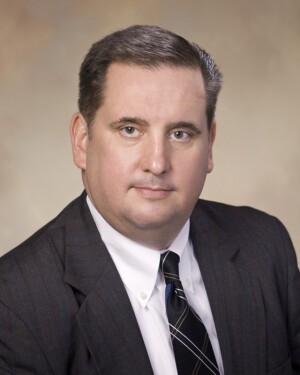by
Gus Iversen, Editor in Chief | June 05, 2015
As the chief information officer at Mississippi Baptist Health System, Steve Stanic is no stranger to the challenges associated with big data. At HIMSS this year he participated in a panel at the McKesson media briefing that looked at the obstacles standing between hospitals today and the vision for providing better care tomorrow. DOTmed News recently got in touch with him to get some additional perspective.
DOTmed News: At HIMSS you kept returning to this concept of the National Patient Identifier, which you called the Holy Grail for information access. What does the term "National Patient Identifier" mean to you?
Steve Stanic: My idea of a National Patient Identifier is one similar to a social security number. All citizens with access to healthcare have a unique number that will contain all the information a physician will need to make smart medical decisions. The National Patient Identifier is part of the solution to our journey to value-based care.



Ad Statistics
Times Displayed: 69121
Times Visited: 2270 Ampronix, a Top Master Distributor for Sony Medical, provides Sales, Service & Exchanges for Sony Surgical Displays, Printers, & More. Rely on Us for Expert Support Tailored to Your Needs. Email info@ampronix.com or Call 949-273-8000 for Premier Pricing.
DOTmed News: To what extent do you think EMRs and EHRs are succeeding in their promise to integrate health records? With regards to Mississippi Baptist, what kind of challenges do you face when sharing patient data between affiliated hospitals?
SS: Today, I feel EMR/EHR technology does a good job of providing information about patients during their in-patient stay, including: results, progress notes and images — the vital information needed. The need that is not met is the seamless integration, such as the population of data from one EMR to another. One example would be populating a clinic EMR with patient information from acute care EMR. We have to use tools like HIE's, like McKesson’s Relay Health to achieve this.
As for Population Health, the main way I see it impacting Mississippi Baptist from a technology standpoint is that we will need specific tools that analyze our patient population by looking at what is in our EMR and helping us carve out high-risk patients to build programs for. These programs will allow us to monitor their progress and care for them appropriately. I'm not so sure these tools exist.
DOTmed News: You shared the stage with a diverse group of experts. Were any ideas brought up at the media briefing that you found particularly interesting?
SS: Tim Wright of Wagner Pharmacy Company had an interesting perspective on how his pharmacy was using technology to impact patient care. The technologies he mentioned were, Parata Pass Multi-Drug-Adherence Packaging and Ateb’s TimeMyMeds (TMM) Medication Synchronization Software, which allows pharmacists to identify non-adherence and intervene when issues arise. These notifications free up pharmacist’s time and allows them to spend it interacting with patients who need extra attention. For patients, these tools empower them to achieve better adherence on their own.
DOTmed News: What did you see as the big takeaway from HIMSS this year?
SS: Each year at HIMSS, the buzzwords always amaze me. Last year it was Big Data and the cloud – this year it was Population Health. The industry is constantly evolving and that’s the reason why I love working in healthcare.

